Don't wanna be here? Send us removal request.
Text
Perhaps - if anyone is reading this - you might wonder what on earth could keep me so busy, while not working, that I haven’t posted for weeks? Surprisingly, a lot! Visitors, Greek school, wandering around Athens.
It’s almost seven weeks since we made the journey from Marrakech to Essaouira and though mentioned in the previous post, there’s much more to recount.
The journey of a couple of hours was extended by our interesting stops. Where we didn’t stop was as interesting; villages where horse-drawn taxis were the main form of local transport and early model cars provided longer distance travel. Men - we didn’t see many women in public spaces - were often dressed in traditional robes. The ‘Universal Day of the Donkey’ should be declared for the countless donkeys we saw carting, pulling, carrying, standing around. I think the donkey holds economies together in some parts of the world….. We’d been told that we’d see goats in Argan trees but there was no evidence of that so perhaps it’s the wrong season or it’s a myth?!
Essaouira is famous for it’s connection to the hippie trail that brought famous folk like Jimi Hendrix and The Rolling Stones, to the town and the reminders of that are everywhere. Orson Welles has a square named after him in memory of both his love of Morocco and filming of “Othello” on and around Essaouira’s walls and fortress (“Game of Thrones” also filmed an episode there apparently).
G swam in the Atlantic Ocean on our first day in Essaouira which, after the Meditteranean, was bracing. You’ll see a photo below of G and Lucien having a lovely time on the shore.
Essaouira is a significant fishing port, bringing in large catches of sardines and anchovies that are shipped to Spain and Portugal. The boats, squashed together in the harbour every day, are painted blue which apparently attracts sardines. It’s possible to walk amongst the fishermen as they bring in their catches and, by walking further along the port, seeing the larger boats bringing in their nets. All along the quay, fishermen sell their catch and, if you wish, you can buy the seafood you’d like and have it cooked on an open grill back at the entry to the port. Lucien (aged 6.5) is a keen fisherman who was fascinated by everything that was happening, especially the fish being sold and the nets being winched off and on the big boats.
Away from the port, within the walls of the medina, craftspeople make and sell their wares. Like so much of Moroccan culture there’s great delight in the hidden. Behind a blank door you might find a beautiful riad or a hammam; a wooden box requires a particular twist, turn or trick to open it. I am beguiled by the pride and skill of Moroccan artisans and craftspeople and their delight when their work is appreciated.
We ate some wonderful meals with J, J & the boys especially at a restaurant where we lolled about on divans listening to the owner’s favourite tunes of the ‘60s and ‘70s!
The Essaouira bazaar, smaller but as fascinating as Marrakech, revealed everything from woven goods, clothing, second hand everything-you-can-want-or-need, jewellery, Berber crafts (astounding), birds, food, rugs, spices, scents to buy by the gram (I bought amber and orange blossom). A sensory dictionary.
On our final day, G, J, J and the boys decided that a camel ride along the beach was in order and what a marvellous time they had! I spent a blissful hour or so alone at the riad, horses being more my thing!
There is so much more to write about Morocco but this probably isn’t the place. My memories will live on through photographs and my recollections will bring me great joy for as long as I’m around to remember. I hope we return some day…..
Pics by me, G & J
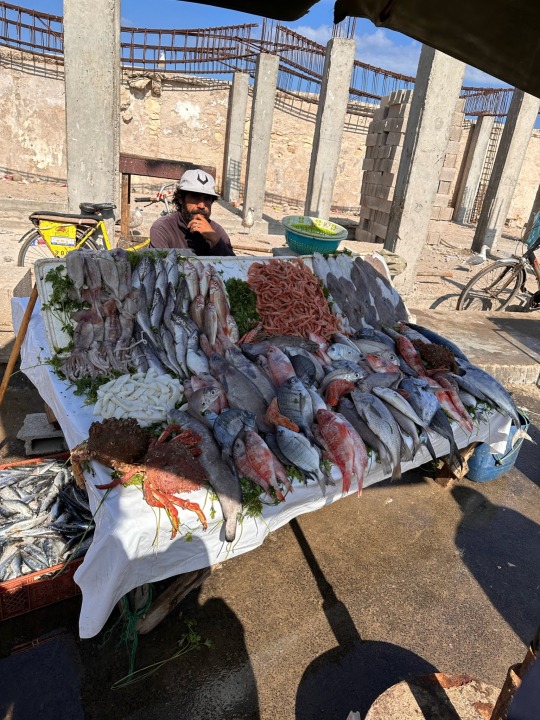
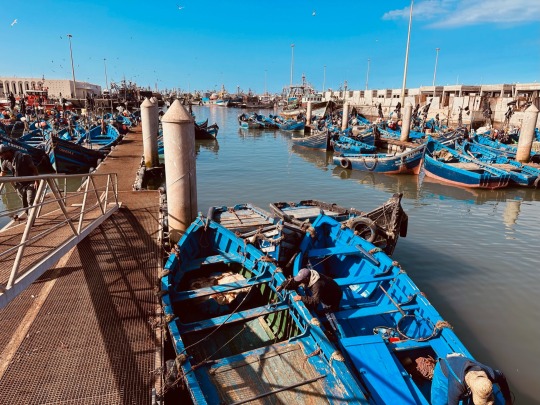
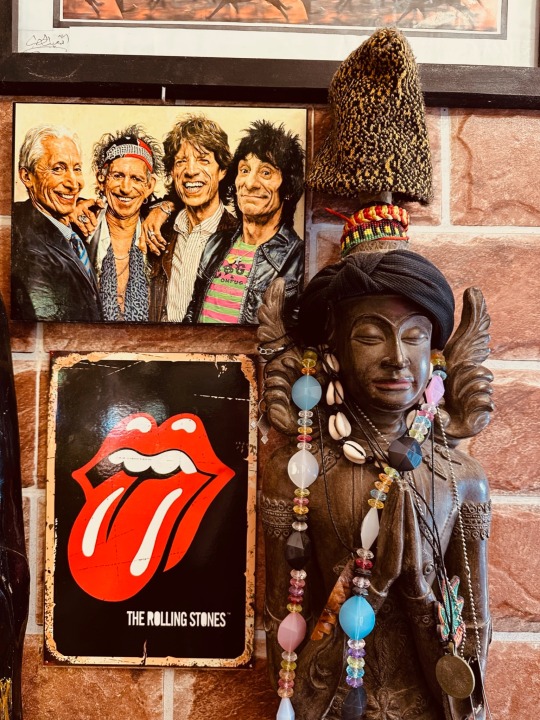

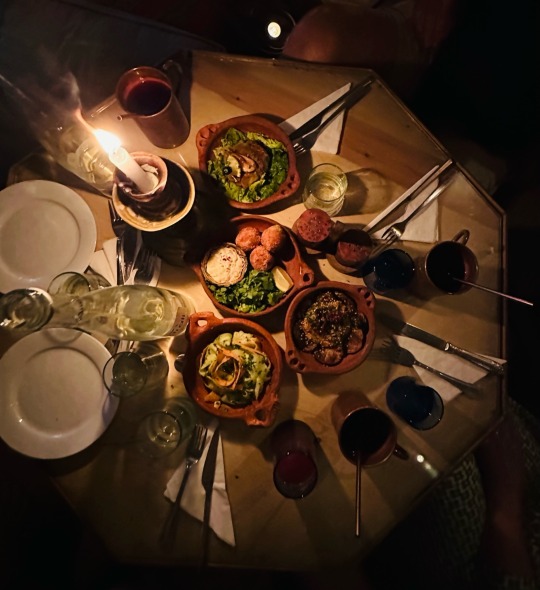
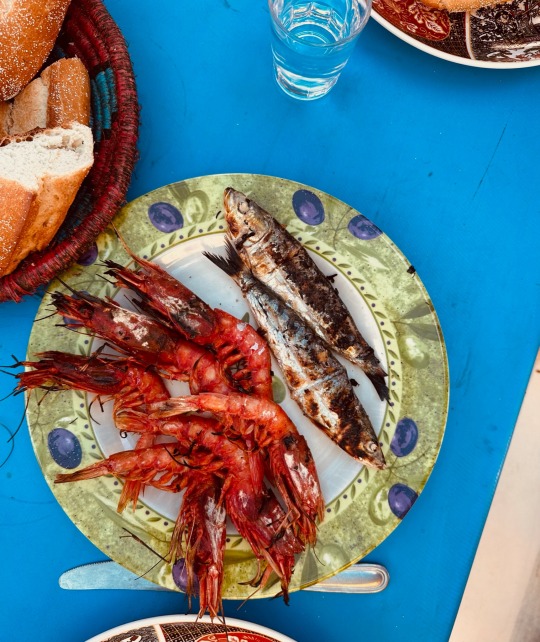

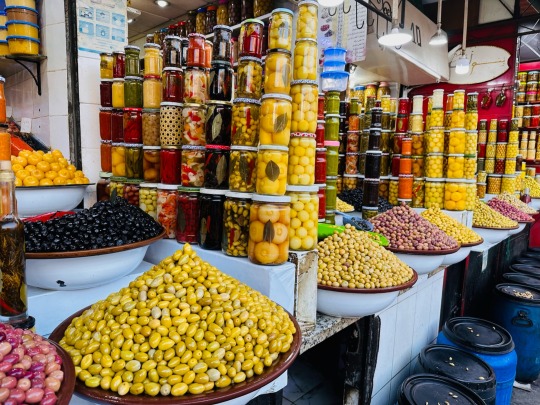
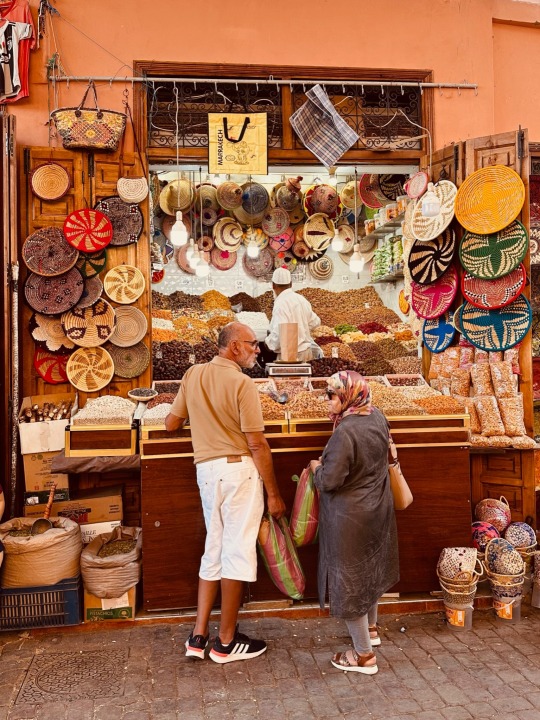
3 notes
·
View notes
Text
More Morocco.
It’s 4 weeks since we left Marrakech and headed to the seaside town of Essaouira on the Atlantic coast.
The road trip to Essaouira - with J&J and their children - was a great start to our time by the sea. Once we left the busy Marrakech roads the landscape emptied. To our left were the Atlas Mountains, visible only as distant hills on the horizon. Our driver stopped at a roadside stall where lamps, woven goods and ceramics - many made on-site - were sold. I am entranced by the Moroccan aesthetic with its bright colours, artisanship and practicality. Consequently I left with a bit more stuff to pack.
Our second stop was for lunch and comfort breaks. We pulled into a petrol station which also housed a cafe. Behind the facade was an oasis, surrounded by seating in the Berber fashion, lots of different birds in cages, an ostrich (!) and a horse. There seemed to be a lot of people working at the station including three impeccably dressed young men, all operating the single cash register.
The third stop was at a cooperative, run entirely by women, producing Argan oil and the many derivative products. Argan oil has provided many Moroccan women with a path out of poverty as the processes involved with harvesting and production are primarily women’s business.
The landscape changed as we approached Essaouira, undulating and with the scrubby growth common to so many seaside locations around the world. We were deposited outside the walls of the medina and our luggage (and the kids) were taken by cart to our riad. Essaouira has very sensibly banned motorcycles within the medina, unlike Marrakech where there are motorbikes and cars in the very narrow streets. Consequently Essaouira is quieter and very pedestrian friendly. Every street and lane has so much to look at with the beautiful doorways common to Moroccan homes and businesses.
G made his way, almost immediately, to the beach returning with a report that the water was very cold, a real shock after the Meditteranean!
More soon…..
Photo credits: Me, George, Jason & Josephine
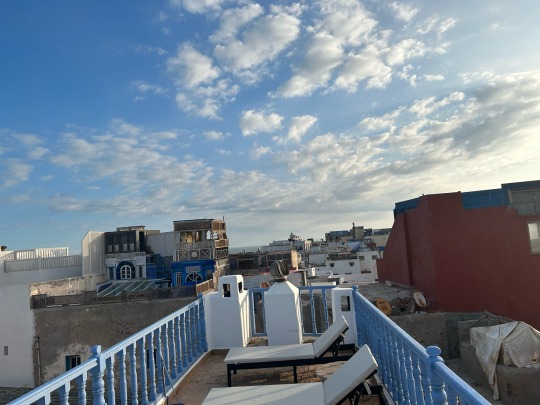
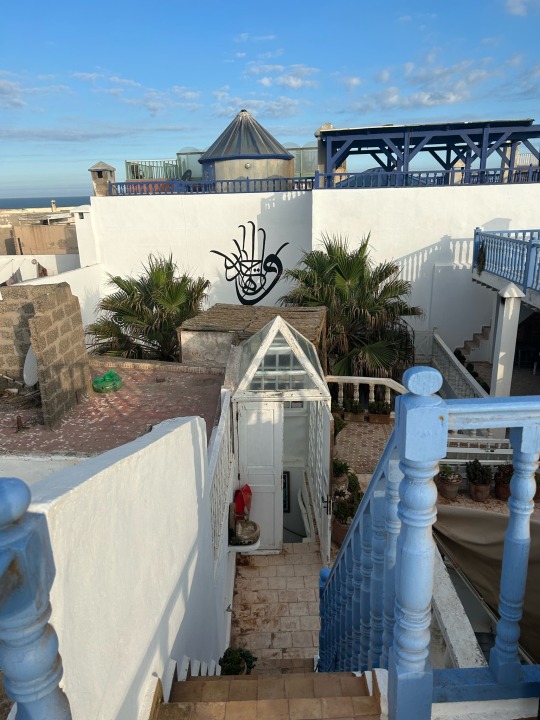


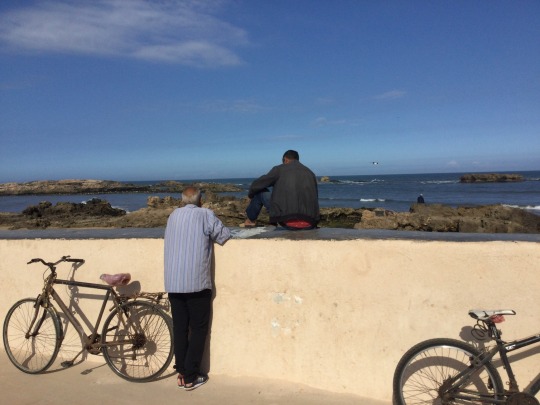


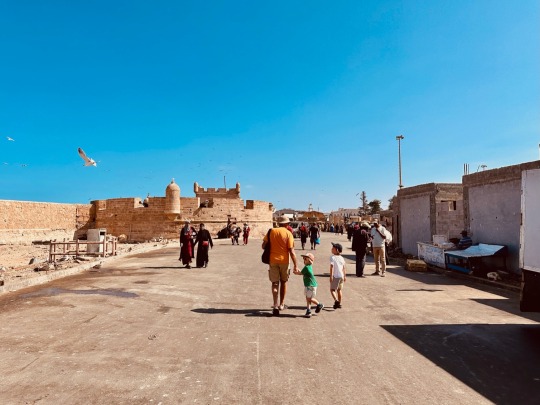


2 notes
·
View notes
Text
George, of Morocco….
Deserving of its own post, these pics of George atop a camel and about to embark on a beachside ride at Essaouira, on the shores of the Atlantic Ocean. I love that he looks absolutely at home! None of me because I enjoyed some quiet time back at the riad…
Photo credit: Mustafa
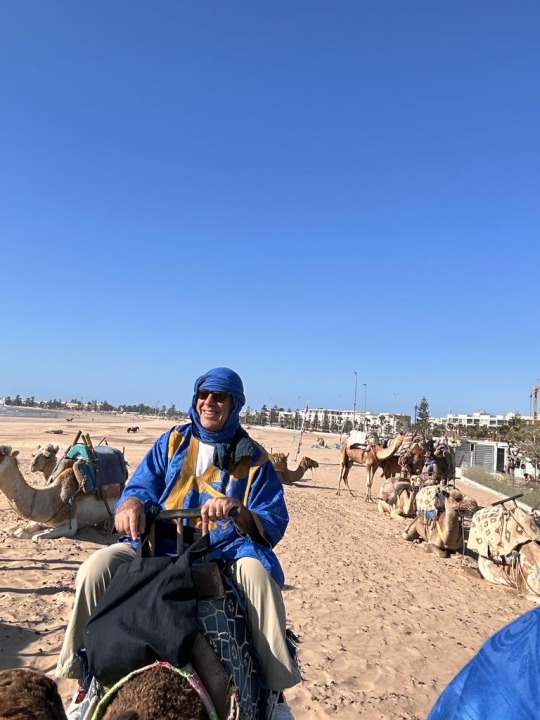


6 notes
·
View notes
Text
Absorbing Morocco
Morocco is a deeply sensual experience. The aesthetic is rich with colour, patterns, textures, smells (good and not-so) and sound. I found it impossible to traverse anywhere quickly because there was so much to absorb and, now back in Athens, it’s going to take me a while to really digest all that I saw and experienced there. So for the timebeing, here are some photos and please be patient with me. A lot’s happened!
Snaps taken at Jardin Majorelle, the Yves Saint Laurent Museum and the roof top of El-Fenn.
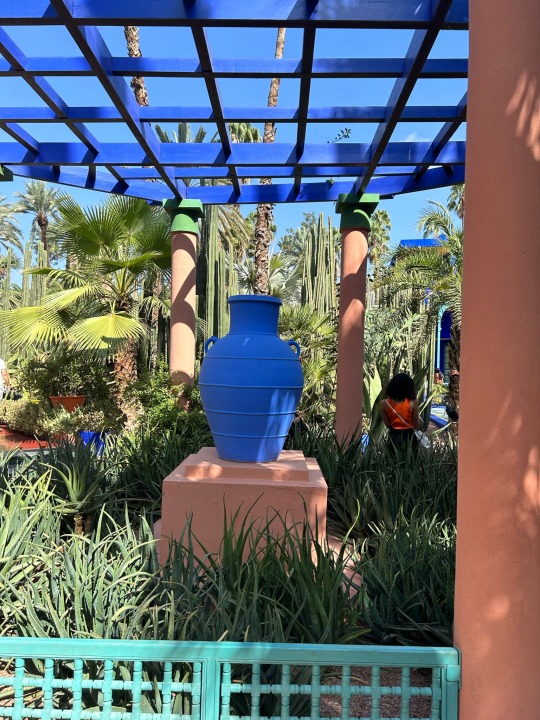
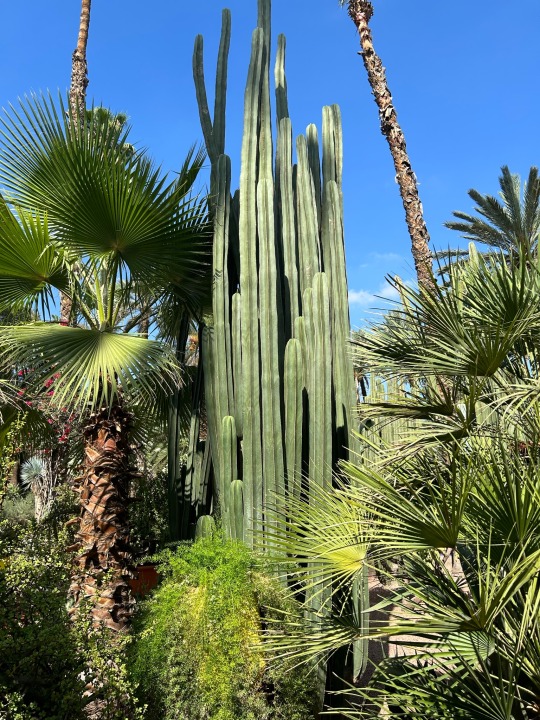
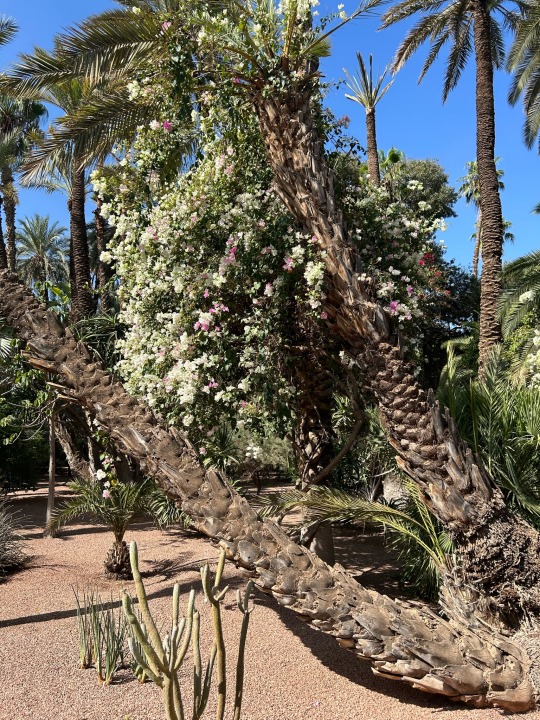
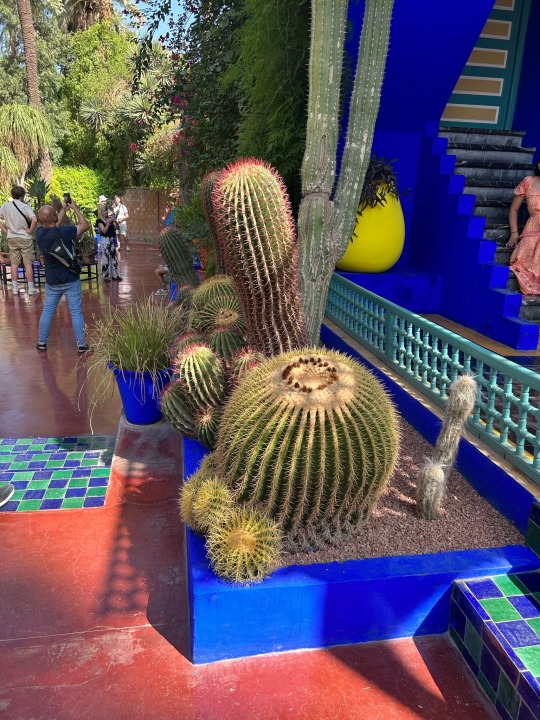



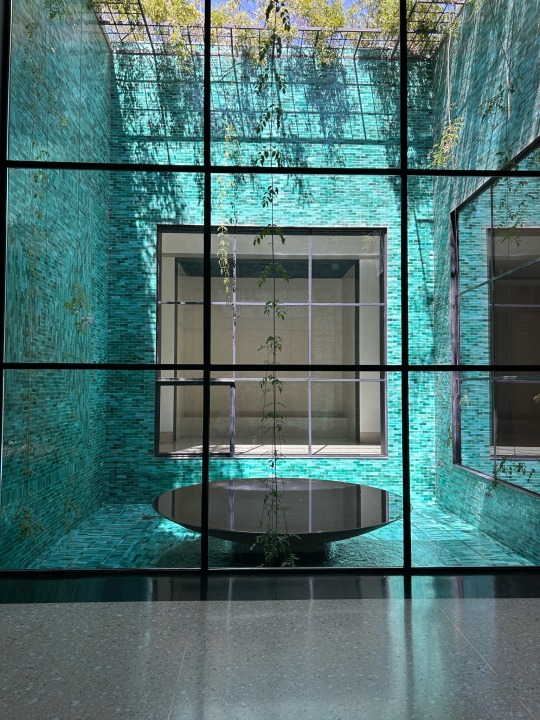
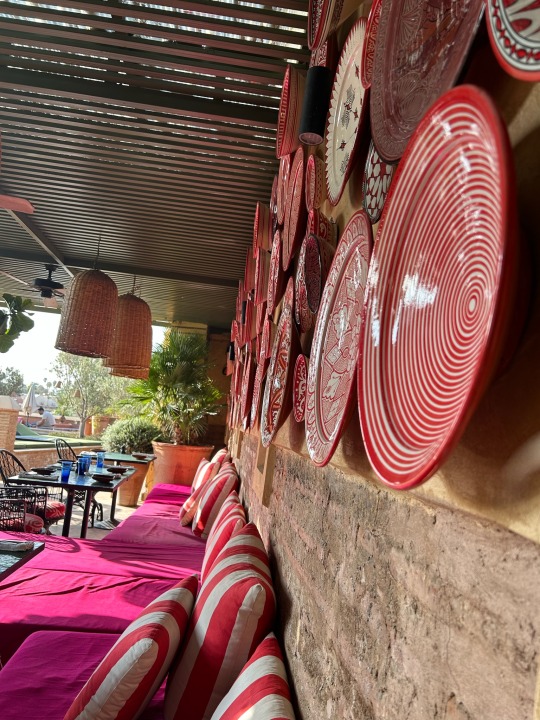
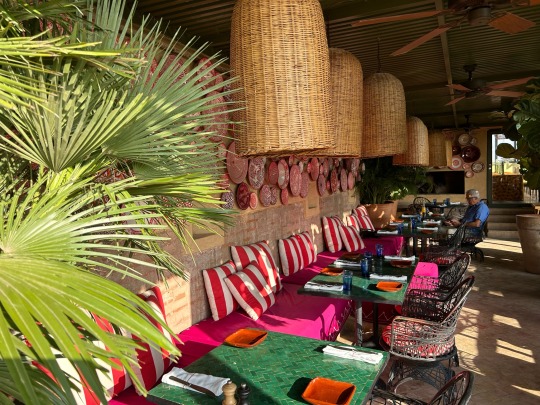
0 notes
Text
Part 2: Le Jardin Secret - oh la la
Thank goodness for the foresight of those who rescued the riad and gardens from demolition. The pics are a tiny glimpse of a wonderful place that illustrates Moroccan sensibilities and craftmanship. The use of water, light, shade, tiles, plaster, plants, textiles and colour show why artists and adventurers find so much inspiration in this beautiful city.



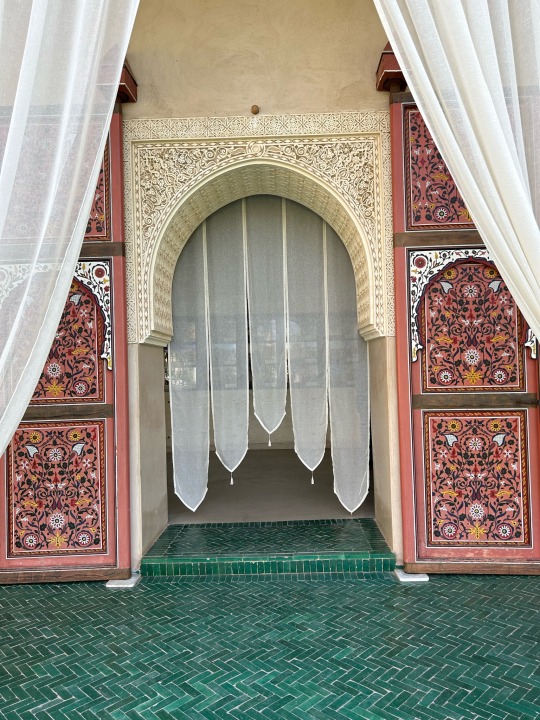


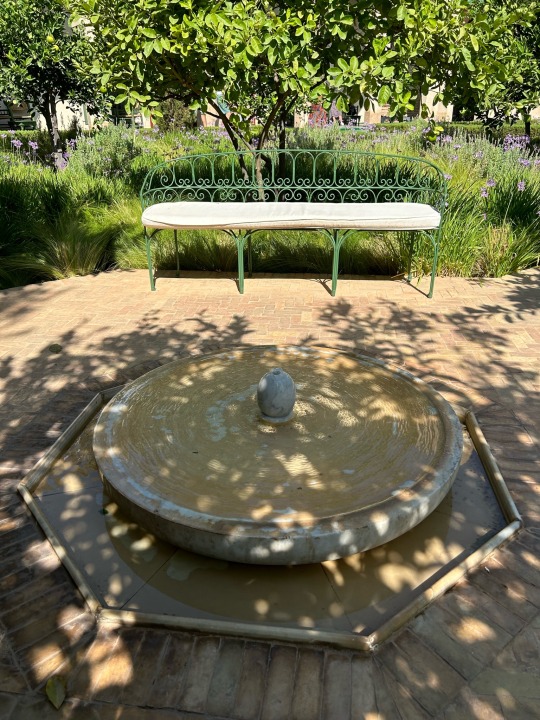

3 notes
·
View notes
Text
Part 1: Shaken and stirred
At 11pm last night (Friday 8 September) we were woken up by the earthquake that has had many dreadful consequences for Morocco. It was terrifyingly powerful and we joined both Moroccans and visitors down on the streets, bracing for aftershocks. We eventually were allowed back into the riad and invited to the rooftop for a nerve-calming drink. The scene at the rooftop bar (pictured below) is indicative of the much wider destruction in Marrakech and Morocco.
We ventured out into the medina this morning to see vehicles under rubble, porticoes and walls collapsed and many shocked people. It was subdued, an unusual occurrence in a place that hums like a crowded beehive. Reports start to come through of the destruction, injuries and lives lost. Calls and messages come from friends and family but, thankfully, we are okay. Very shaken (bad pun).
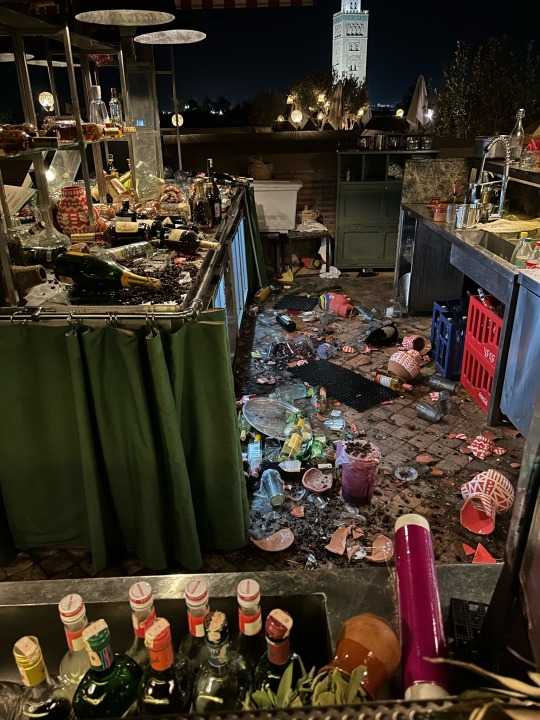
But, there is still so much beauty in the medina and rather than share more pictures of destruction (there were enough in the media) here are pictures of doors and arches of beauty, mercifully untouched.
Our walk ended at Le Jardin Secret, a bogglingly beautiful riad and garden, restored from dereliction. Those pics form Part 2 of today’s posts and do not do justice to that spectacular place.






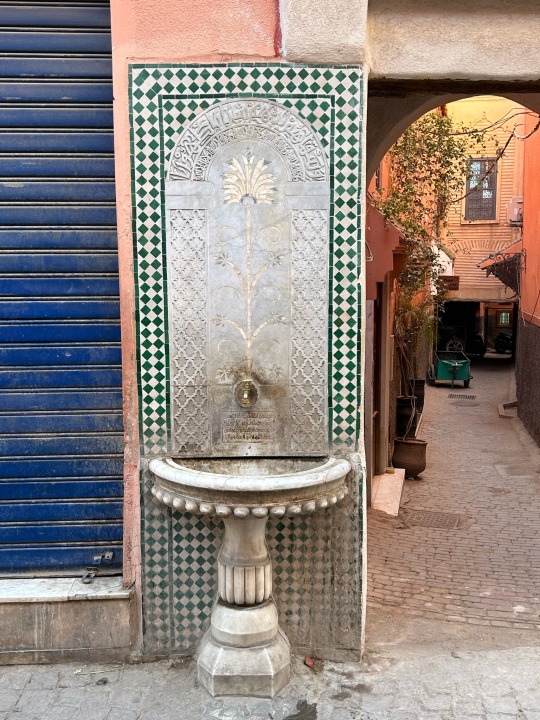
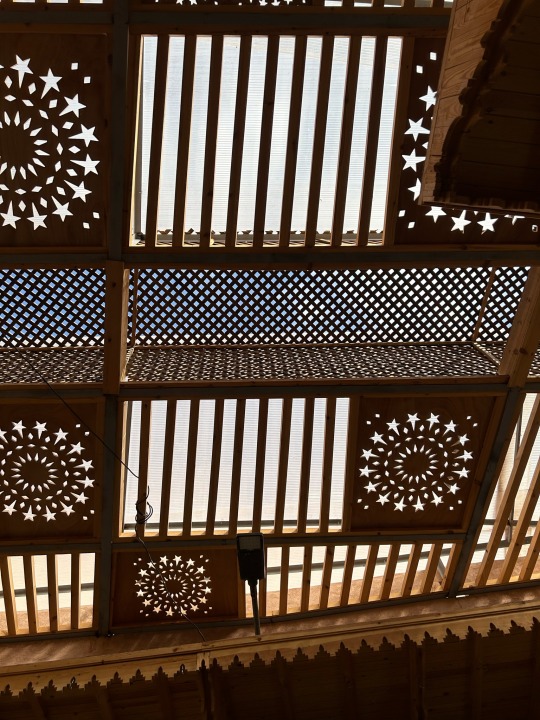
4 notes
·
View notes
Text
Marrakech, Morocco
Well. First time on African soil. Thoroughly over-stimulated and we’ve barely left the riad.
Flying into Marrakech reminded me of the last part of the flight to Mildura. Desert then the signs of cultivation. Here it’s olives and oranges that create the patchwork viewed from an aircraft.
The driver from the airport explained that Marrakech is experiencing enormous growth, driven by tourism and an ambitious monarch. There are huge public works outside the old city’s pink walls.
Our riad, El-Fenn, is located just inside the medina. It’s deceptive entrance conceals an extraordinary interconnected group of buildings with 41 guest rooms, myriad very beautiful spaces, three pools &c. Once I’ve stopped being gobsmacked I’ll take and post photos. Thank you W for advice re a sanctuary to escape the medina and to a Nice Lady for loving El-Fenn on Insta and pointing me in this direction.
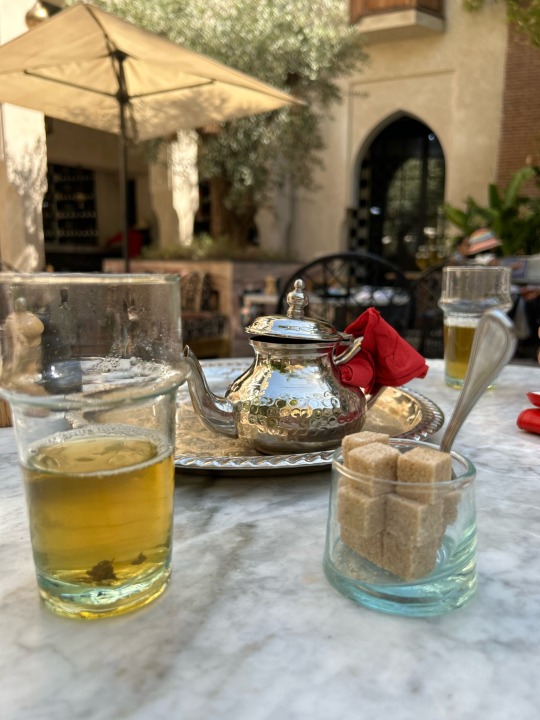


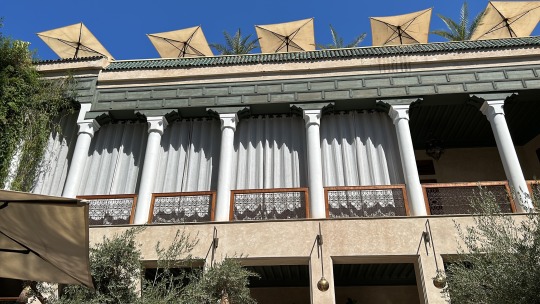
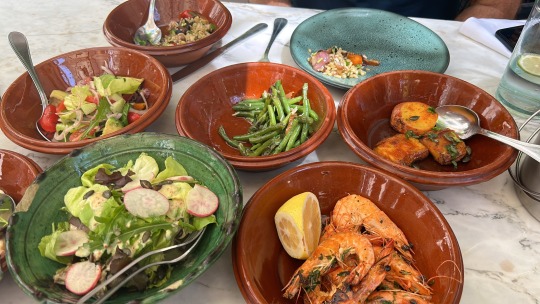
2 notes
·
View notes
Text
Tiny kitchen creation.
After a hectic 24-hours of unprecedented weather (and I’m not exaggerating, it’s been confirmed by Greek meteorologists), we ventured out to the centre of Athens to pick up some new crockery and grab a coffee.
On the night of the storms, our first marooning was at the local jazz bar where a quick drink turned into a long wait and watch as the deluge commenced. We eventually made a dash back to the apartment, grabbed umbrellas and headed for a very local taverna that serves food that could come from any village kitchen or taverna - keftedes (meatballs), gigantes (white beans in a tomato sauce) and horta (steamed greens ‘weeds’) washed down with beer and local rosé
Last night the two-element hotplate came out after the mushrooms and onions had been chopped for risotto. There’s not much bench space so there are logistics that need pre-thought: what needs to be prepared first; cooked first; which element will heat the stock, then steam the broccoli? The simplest home cooked meal tastes good when so much time is spent eating out.
The cost of living has increased in Greece but it is still - relative to Australia and other countries - inexpensive to eat out. That is still beyond the means of many Greeks who, as our friend Yorgi said, got through austerity and the financial crisis to then be clobbered by increased costs resulting from COVID and the war in Ukraine.
Next stop Marrakech and looking forward to the colour, food and culture.


1 note
·
View note
Text
Tiny basic kitchen cooking.
The studio we call home here in Athens has a kitchen that reflects the old style. Tiny apartments and houses did not have dedicated ovens, instead food would be taken to the local bakery to be cooked in their ovens. A built-in hotplate wasn’t part of the kitchen either. We cook on a two-element, portable stove and have a small electric oven for roasting/baking. Our little kitchen also has a marble benchtop and, until a recent update, also had a marble kitchen sink.
So while whipping up a gourmet feast is unlikely, it’s surprising what you can cook. I’m going to keep track of the meals we create with basic ingredients and implements but with some great seasonal and local ingredients.
Tonight’s dinner was a chicken and potato salad, with both those ingredients fried together with lots of delicious fresh garlic. Along with great tomatoes, cucumber, Kalamata olives, feta, lettuce, charred capsicum, beetroot and olive oil. Yum.
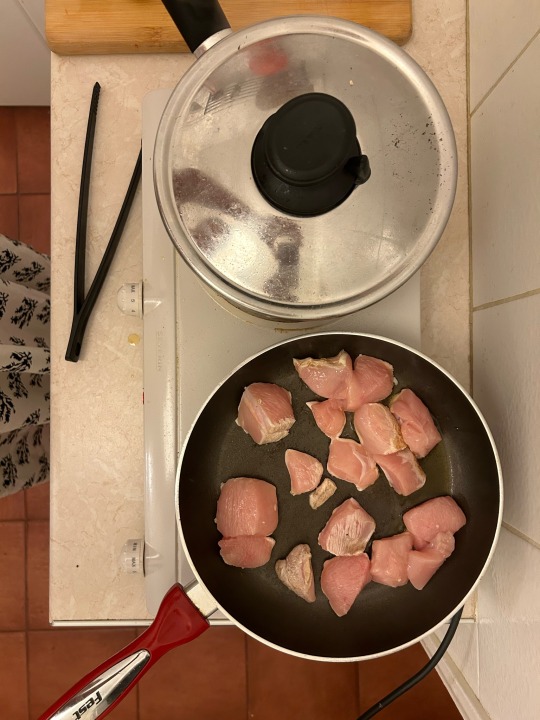


2 notes
·
View notes
Text
I see a Blue Moon rising.
Nafplio, a very favourite place, one that I’ve written about previously here. So I won’t carry on about its history etc but let me know if you’d like to hear more, perhaps you’d consider visiting it one day?
It was important to get out of Athens a little earlier than planned as the smoke, from the wildfires, and the heat was making breathing a bit difficult. Nafplio’s only a 2-hour bus ride from Athens, across the Corinth Canal. We’re staying in a traditional home, facing the municipal library building and have all the home comforts required including a kitchen to cook (love that).
Last night we set off to climb to the Castro which is located above the Old Town and which looks out to sea in one direction and to the higher hill, topped by the Palamidi Fortress. It was a beautiful evening and the blue velvet Grecian sky was the perfect backdrop for the Blue Moon. Before there was any sign of the moon, the sky lit up much the way it does at sunrise. Then a bright glow appeared above the Fortress and the moon made her ascent. It generated so much light I took pictures without a flash, which you’ll see in this post.
Otherwise there’s been a bit of shopping, eating, walking and a lot of swimming. Back to Athens tomorrow.
Υιασου.
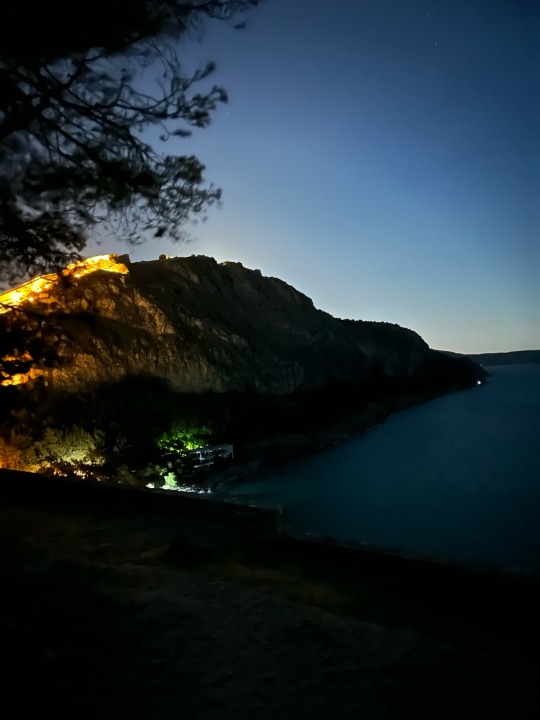


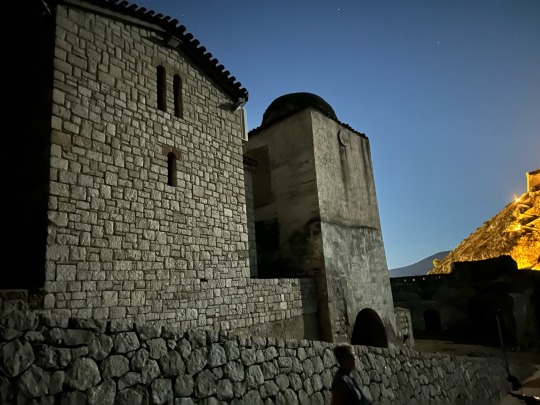

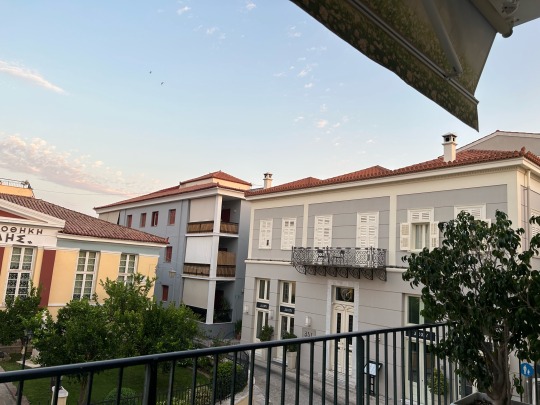
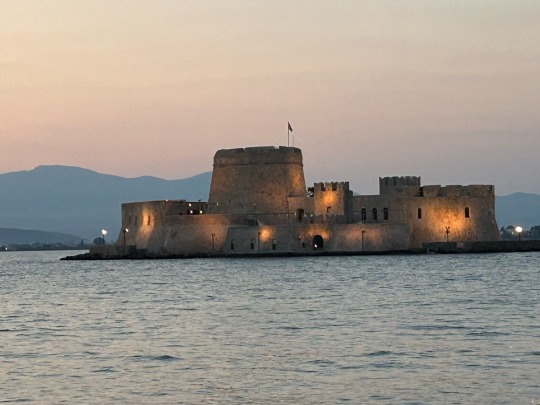
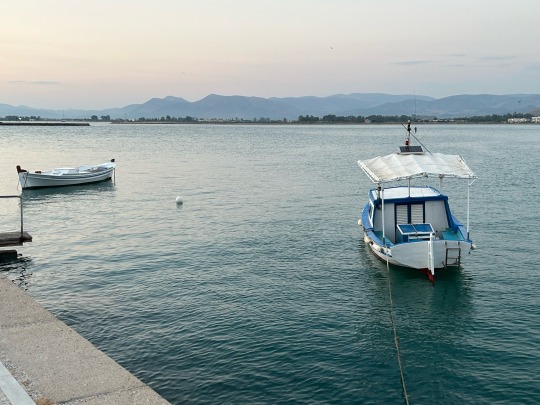
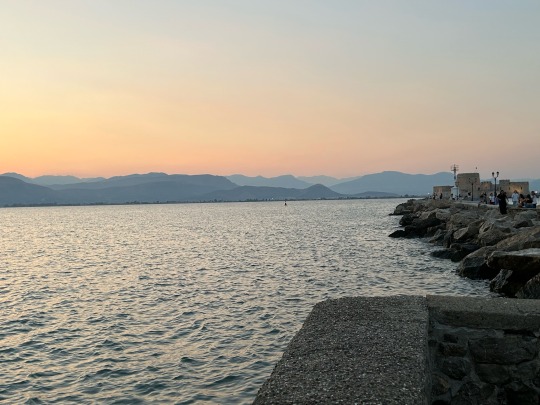
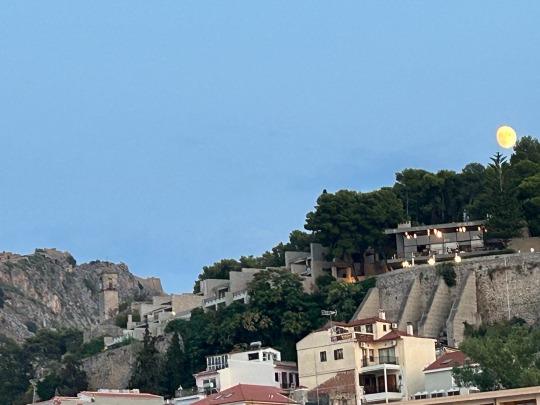
4 notes
·
View notes
Text
The highs, the lows, the unrelenting heat….
Greece’s summer has been dominated by wildfires, both deliberately and naturally lit. The smoke dominates every horizon and, if the wind’s blowing the wrong way, the immediate surroundings. There’s a lot of talk about it but whether action comes from the talk, well that remains to be seen. Humans - so capable and brilliant - yet spectacularly stupid (and yes, I know I’ve just travelled on an aircraft around the world so can’t wag my finger at anyone).
So the fires and the destruction that continues are definitely a low. There have been others but just part of travelling.
Some highs dominated by the warmth of Athenians we’ve met on previous visits. Kosta at Atlantikos, Fanny & Yorgos at ‘Tiny Dolmades’ (the greeting included a ‘paketo’ of those delicious little morsels) and the musicians at the taverna down Fokionos Negri!
An early morning visit to one of my favourite parts of Athens, the Central Markets and a shop that sells local charcuterie & cheese. The olives, the stone fruit, the TOMATOES!
We invited our friends Tamara & Bill for a picnic on our apartment building’s rooftop. It’s - usually - a serene escape from busy Kypseli. An elderly resident, Ilias, has tended a garden up there for many years and the ‘terraza’ has almost 360 degree views of Athens and beyond. It all started well with the requisite ‘oohs’ and ‘ahs’ from our guests but the peace was soon broken by a Very Angry Man shouting for a long time. We were concerned for whoever he was shouting at but because of the proximity of the buildings couldn’t work out where he was located.
The smoky air was part of our conversation but Tamara observed a thick plume of black smoke ascending from the alley that runs alongside the apartment block. We all looked over the edge to see a fierce blaze at street level, the result of an abandoned motor cycle being set alight. Fire engines and police appeared as well as all the neighbours (it’s very ‘Rear Window’ because of the buildings being so close together). I supposed that was a low/high.
Then a high yesterday when we took another friend Di, visiting from Melbourne, to meet Yorgi at Kafeneio ta Kanaria. We grazed on mezedes for a few hours helped down with tsipouro, then walked a neighbourhood I’d never explored before. Work being done to restore the lovely neoclassical buildings - oh how I’d love one of them. We walked to Monistiraki to ascend to the Pnyx, the ancient heart of democracy as we now know it. It’s a lesser known and visited part of Athens that has its own history and offers amazing views of the Parthenon. And with an ascending moon, well that’s a definite high……
Next stop Nafplio….

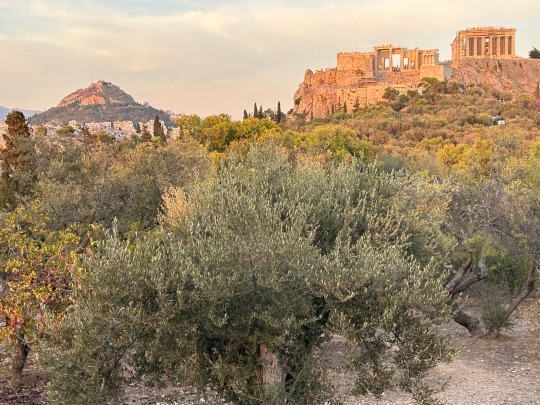
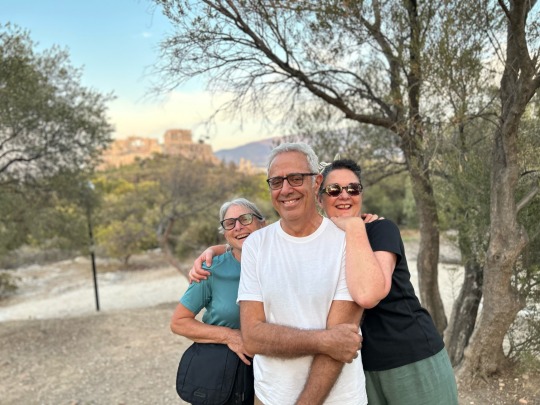


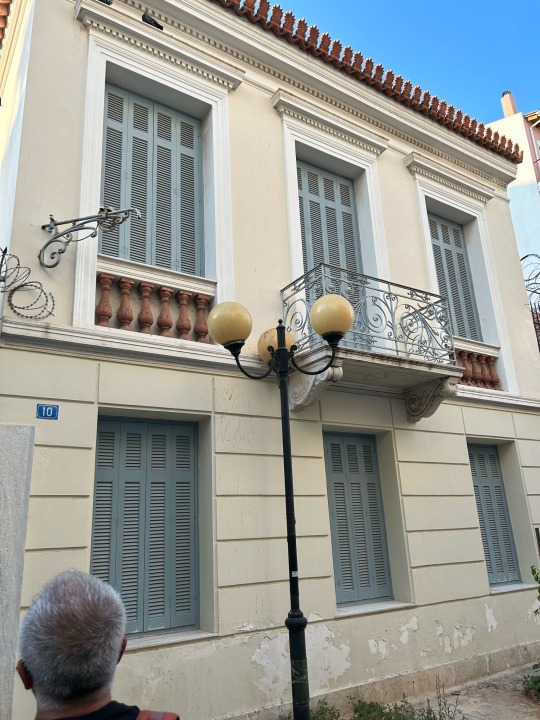
2 notes
·
View notes
Text
Sunday lunch.
Greece retains the minimal retail approach to Sunday meaning that it’s just mini-marts and petrol stations that are open. It’s still a day of leisure and perfect to gather friends and family for a long lunch.
This hot Sunday in Kalamata, we enjoyed a couple of morning hours at the previously pictured cafe and beach. Then we headed into Kalamata’s old town to visit the small but excellent archaeological museum that features artefacts from four regions of the Peloponnese. Many of the exquisite artefacts come from excavated funerary sites so thank goodness there was the desire to surround the dead with beautiful objects for their next journey. A temporary exhibition was a contemporary artist’s response to ancient artefacts using modern techniques and materials.
Opposite the museum is a very old church located in the middle of a plateia (square) and our lunch destination lay beyond that. A family-owned taverna served us a wonderful assortment of mezedes including a local speciality of feta wrapped in filo with honey and walnuts and the ‘political salad’! We introduced our friends to tsipouro, a grape-based spirit best served on ice and sipped slowly. Lunch stretched on until 4pm - perfect!


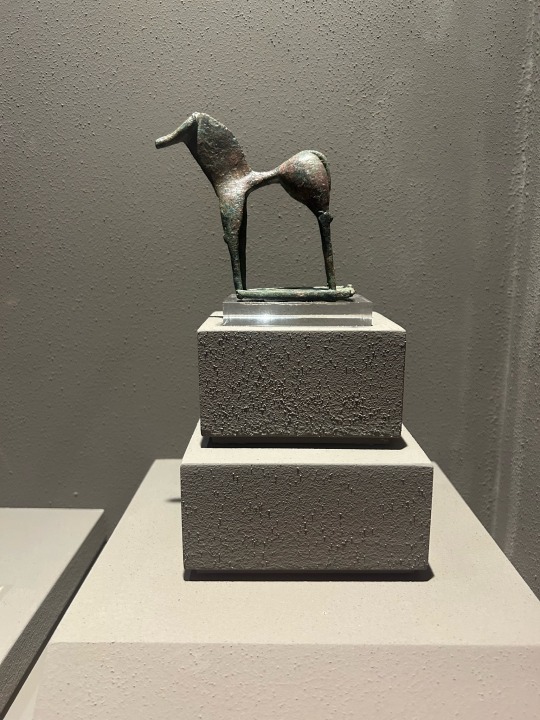
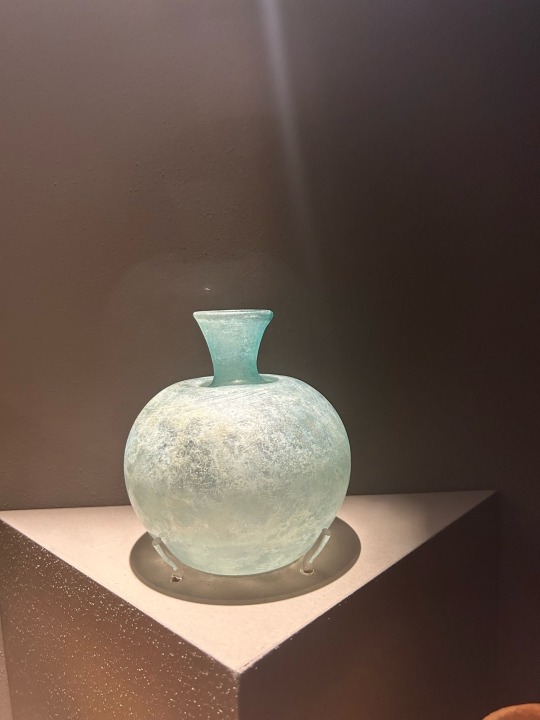


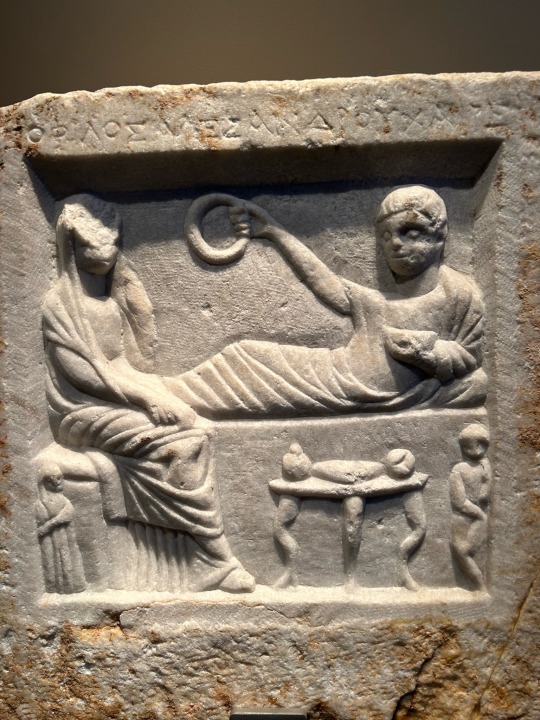


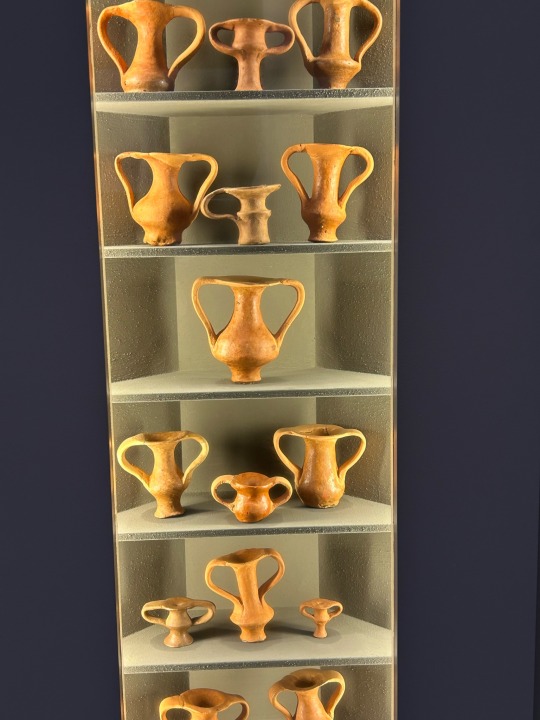
1 note
·
View note
Text
Twilight drinking. Kalamata is a large town/small city located in the south west of the Peloponnese. It’s a seaside town, famous for its proximity to some of Greece’s best olive groves. It’s wide streets, small but lovely beach, university and old town do not shriek of its proximity to the proud, violent, extraordinary history of the Spartans. This part of Greece was the birthplace of the final and successful war to unite Greece and win independence from Ottoman rule in the 19th century.
But it’s here, all the time. It’s there in the 1,300m+ granite mountain that dominates Kalamata’s eastern side. It’s there in the fortress, built by the Franks in the 1300s.
Modern Kalamata has a small international airport, the usual multinational shops and umpteen tavernas, cafes and beach lounges. It also bears the weight of the forced migration of people from Africa, the Middle East and Bangladesh. Men and women trudge along the beach and the cafes trying to sell something that might be useful. Daytime Drinking is mostly a place for me to record a trip and perhaps someone else might read it. So it’s not supposed to be political or preachy. But it’s not possible to witness poverty on this scale and not say anything.
Greece is still a poor country. Their transition from non-Euro to Eurozone was abrupt and the people were under-/un-prepared. As Stelios described it, “We went barefoot into thorns”. As I read some time ago, Greece went from the back of a donkey to the front seat of a Mercedes Benz, with no knowledge or preparation to manage that enormous change. This lovely country still pays the price. So as the ceaseless flow of migrants continues, Greece works to find its place amongst its wealthy cousins in the Eurozone and provide the most basic needs to those who’ve arrived with nothing.
4 notes
·
View notes
Text
Floating hats. At many Greek beaches it’s common to see a little flotilla of ‘floating hats’, their wearers’ shoulder deep in the sea, chatting with their companions. There’s very little swimming involved but it’s a wonderful way to stay cool. Today at Kalamata Beach the hats began to gather as the temperature rose.


1 note
·
View note
Text
Daytime drinking & tiny dolmades?
Thanks Amber T. for encapsulating the freedom of not working on weekdays - Daytime Drinking. It’s the joy of sitting in a favourite place - restaurant, cafe, back garden etc - with time to enjoy conversation, maybe food and perhaps a glass of your favourite beverage. It’s the time spent visiting a new landmark, a beauty spot, a gallery, a museum without the constraints of meetings and deadlines. It’s a rarity and never to be taken for granted.
During the next six months I have the good fortune to be able to explore the nuance of Daytime Drinking. If you’d like to join me at this blog we’ll explore Greece, Morocco and parts yet unknown.
And the ‘Tiny Dolmades’? There’ll inevitably be lots of food talk here and tiny dolmades reference one of my favourite dishes served, just a few doors down from our Athens home, at The Bakalogatos (Ο Βακαλογατος).
4 notes
·
View notes